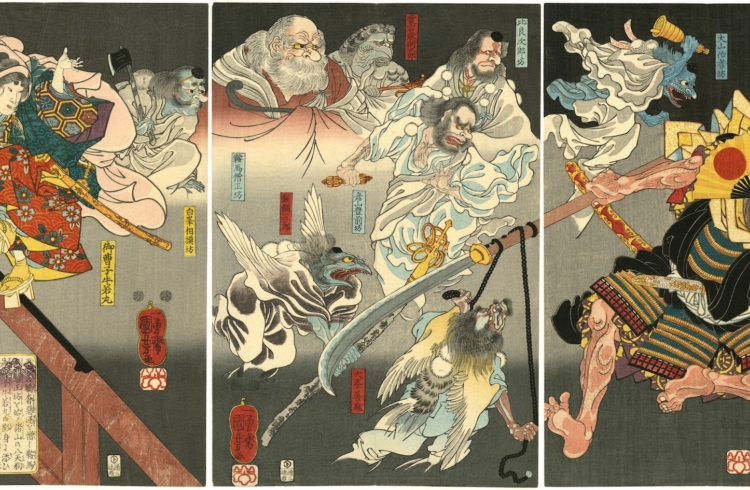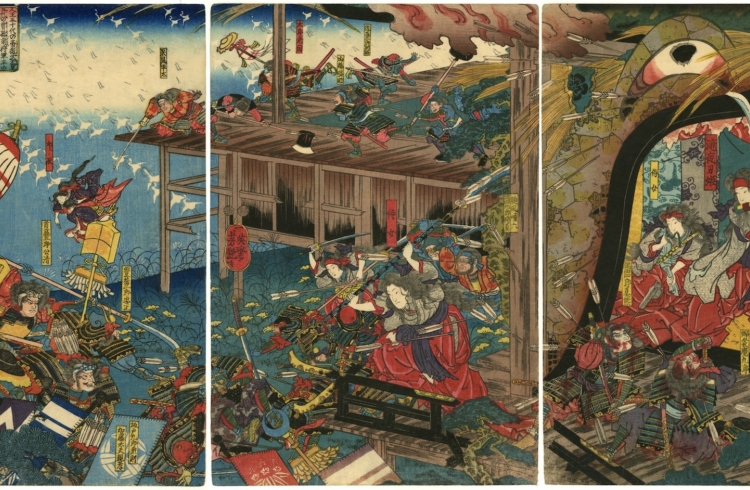- Exhibitions
- Archive
- The Riddles of Ukiyo-e. Women and Men in Japanese prints. 1765-1865
Exhibition
The Riddles of Ukiyo-e. Women and Men in Japanese prints. 1765-1865
27 January to 23 April 2023
This exhibition includes 123 of the finest works of renowned Japanese artists, providing a comprehensive overview of the heyday of Japanese printing (1765-1865).
Japan Museum SieboldHuis is pleased to present ‘The Riddles of Ukiyo-e. Women and Men in Japanese prints, 1765-1865. This exhibition includes 123 of the finest work of renowned Japanese artists of the heyday of Japanese printing (1765-1865) in a comprehensive overview of the classic print art themes: heroes, beauties, actors, and erotic art. The woodblock prints form layered riddles with subtle iconography and symbolism referring to stories from Japanese history, literature, mythology, fashion, folklore, and rumours from daily life in the Edo period. Some works include covert advertising or circumventing the censorship laws.
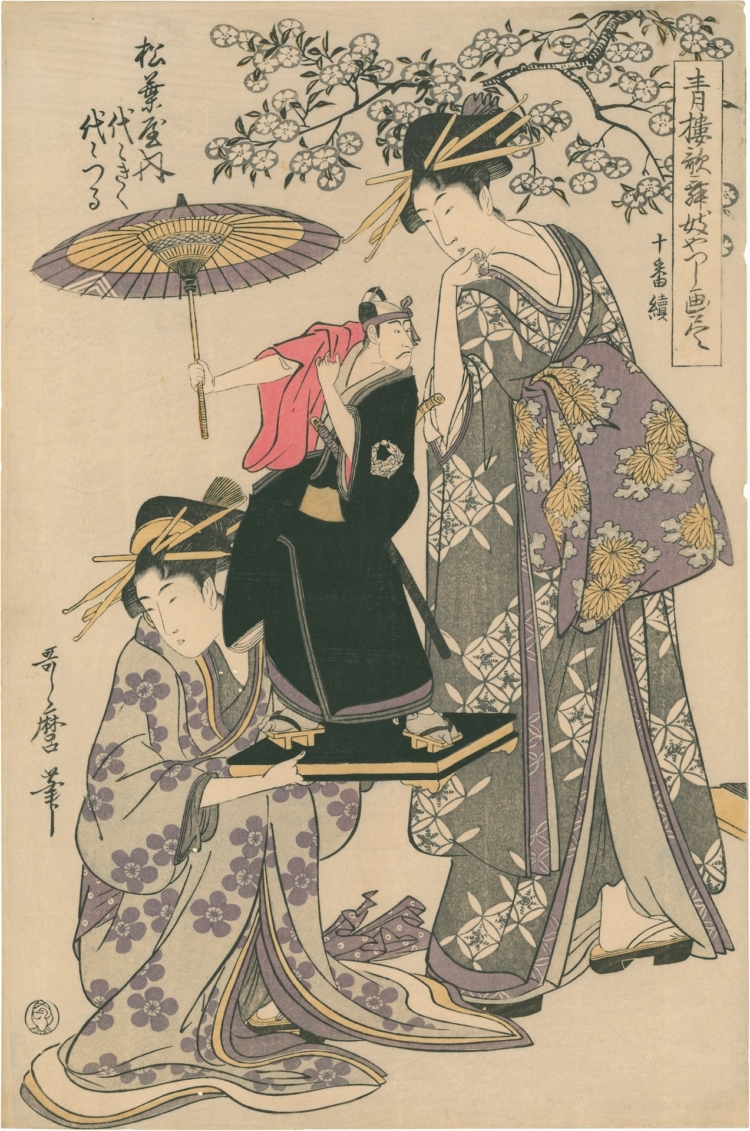
Kitagawa Utamaro (1753–1806), Yoyokiku and Yoyotsuru of the Matsubaya House From the series Yoshiwara Parodies of Kabuki, a Set of Ten ,1798. Private collectie
Every print in this exhibition has been painstakingly examined and described. Embellishments, décor, designs, cartouches, and backgrounds were all closely studied as they reveal the layered narratives in the works. Take for example the print ‘Yoyokiku and Yoyotsuru of the Matsubaya House’ by Kitagawa Utamaro. This is a playful parody of a popular Japanese kabuki play, set in the spring as the cherry blossoms in the upper right hand corner reveal. The text, upper left, explains that the women are in the service of the Matsubaya brothel. The woman on the left is carrying a doll in the image of a famous actor who plays the lead role.
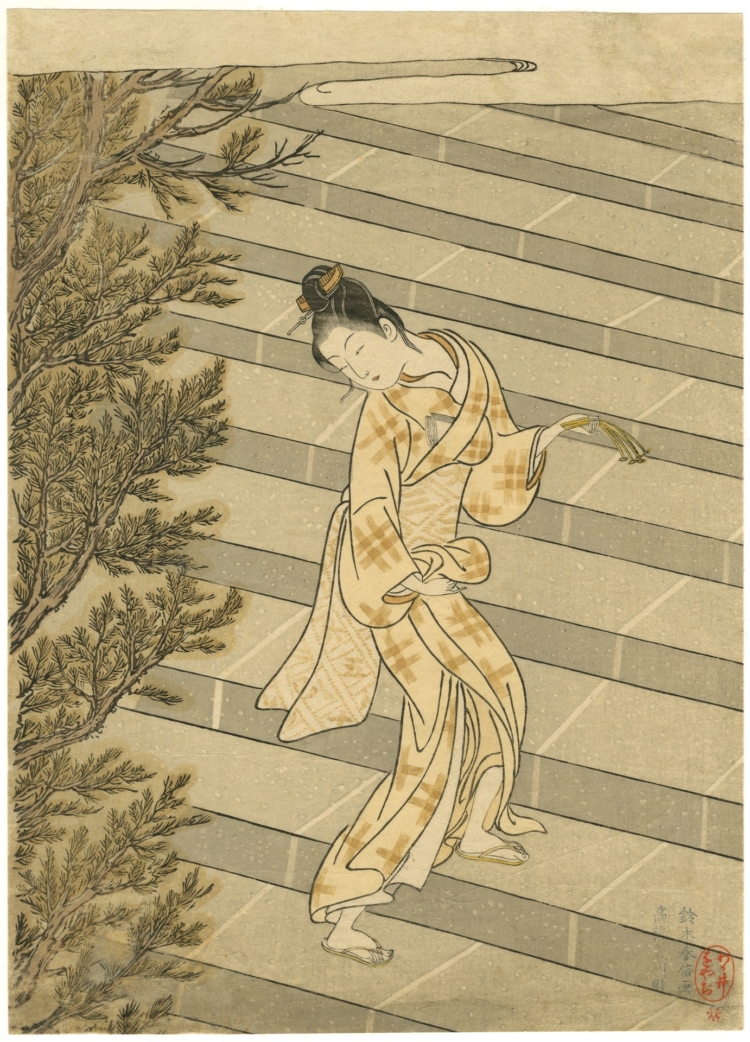
Suzuki Harunobu (1725?-1770, Girl Performing the o-hyakudo Ritual. Scholten Collectie
In the seemingly simple print by Suzuki Harunobu, a young lady stands on a staircase, but the print discloses more information. The designs on her clothes refer to the Japanese moon calendar and in her hands she holds bits of string which serve as a memory aid when performing the 0-hyakudo ritual. Part of the ritual for happiness is to climb the stairs one hundred times and visit the temple. In another work, the triptych by Utamaro for example, we see the morning routine in a brothel where the ladies bid farewell to their customers and prepare for a new day. There is much more to discover in this and many other extraordinary prints from museum and private collections in Japan Museum SieboldHuis. Have we sparked your interest?
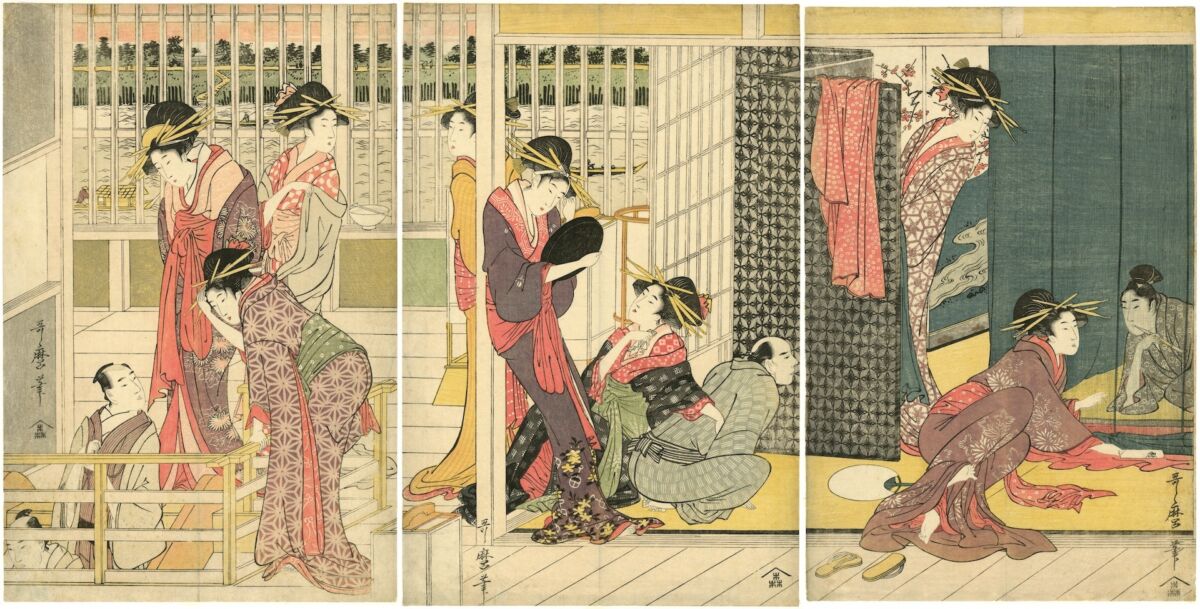
Kitagawa Utamaro(1753–1806). Morning Departure at the Temporary Lodgings. Scholten Collection
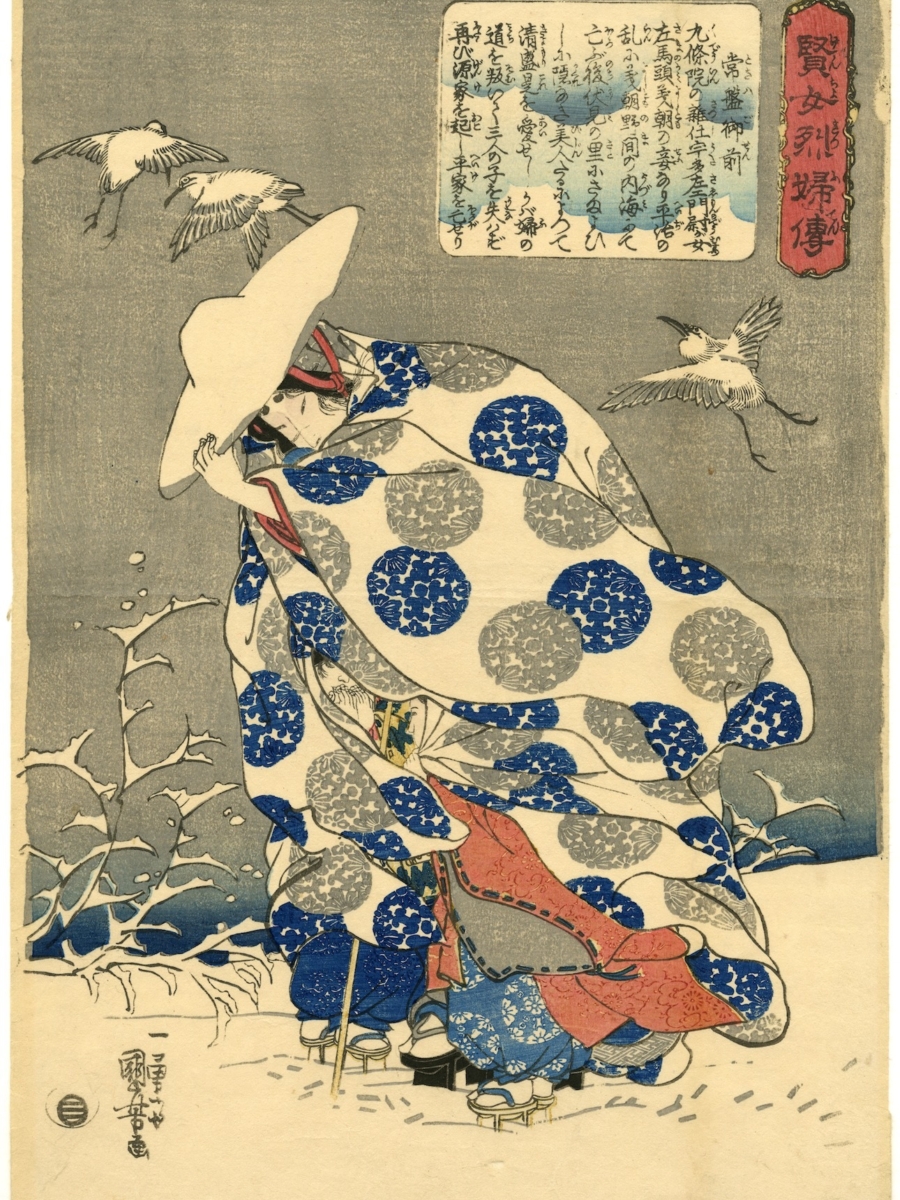
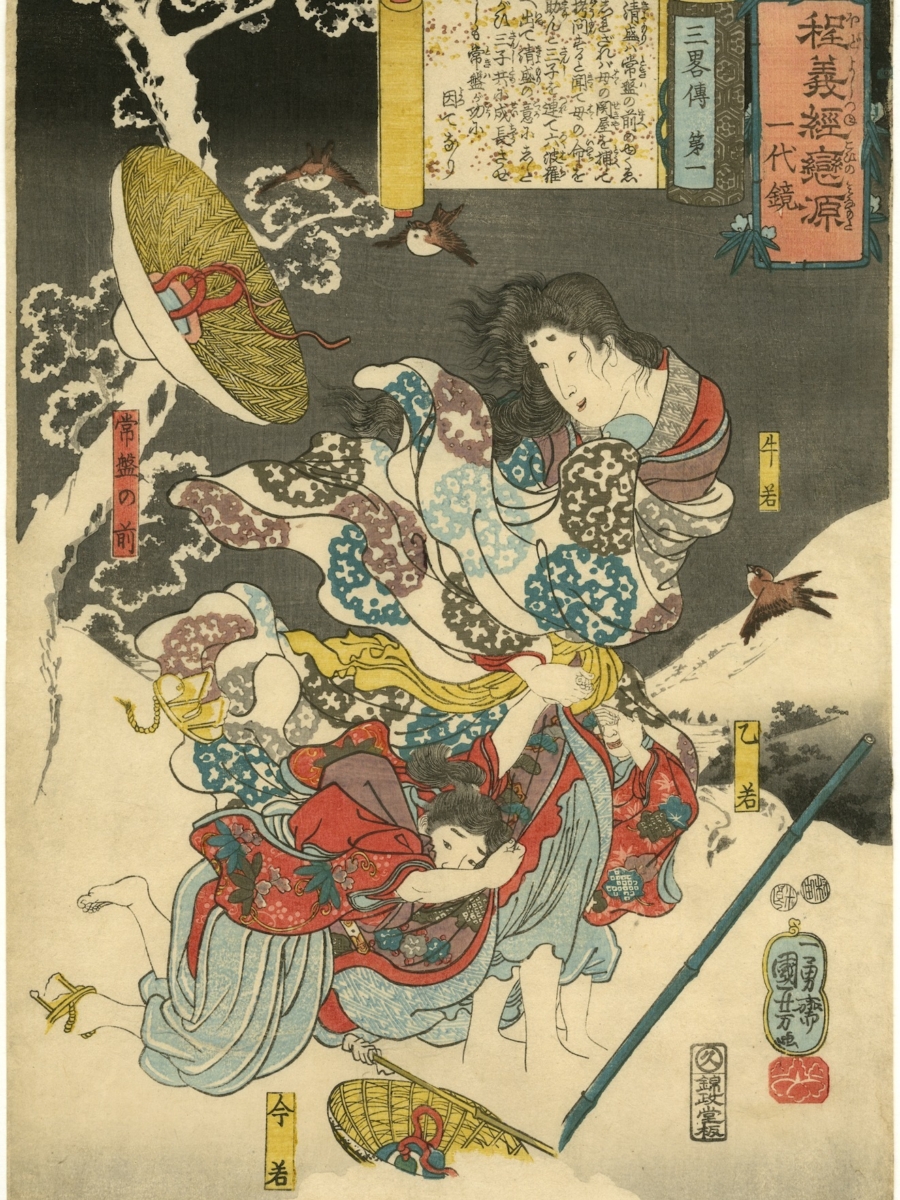
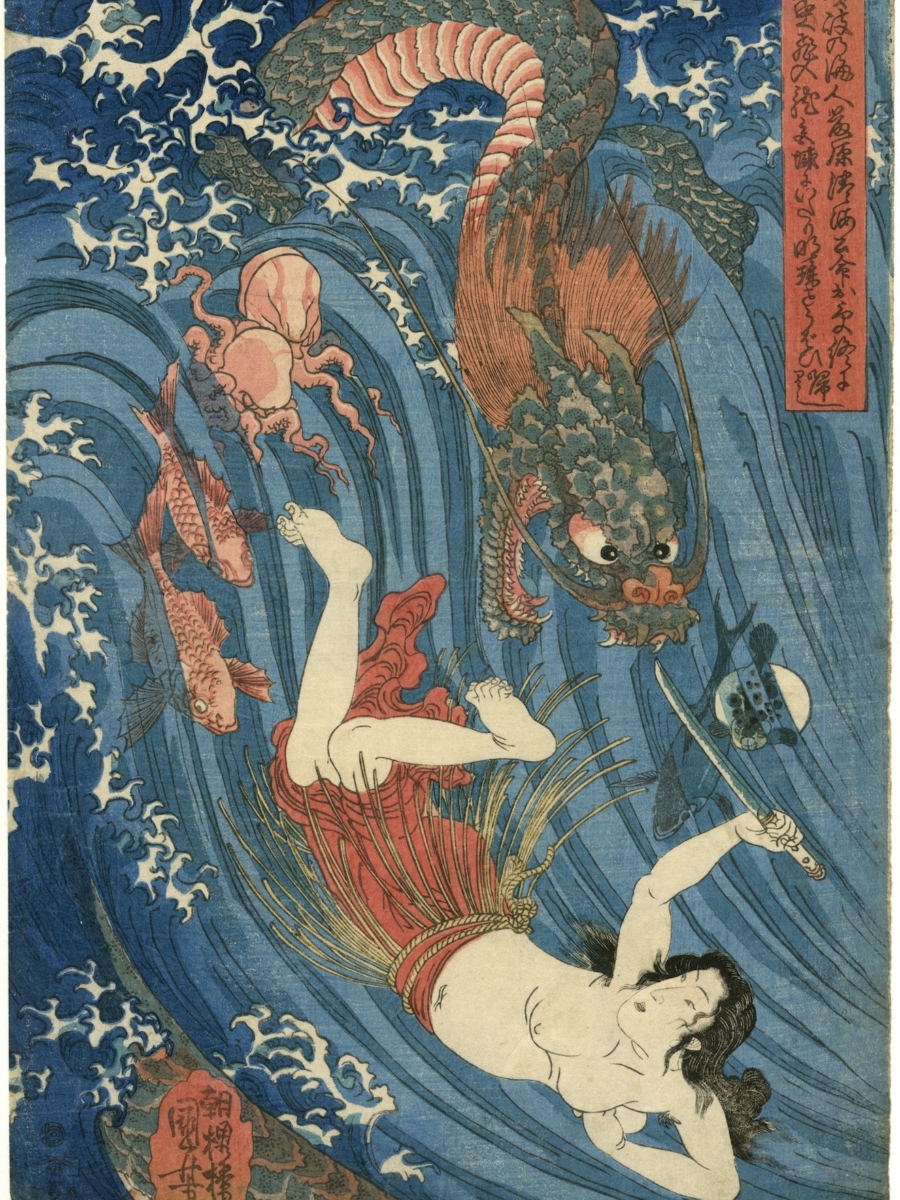

Catalogue and activities
The exhibition and the publication are result of a research project (including) by students of the University of Leiden and is programmed within the framework of the European City of Science Leiden. The publication was edited by Josephine Smit, Jim Dwinger and Chris Uhlenbeck. A wide and varied activities programme offers further insight into this exhibition.

